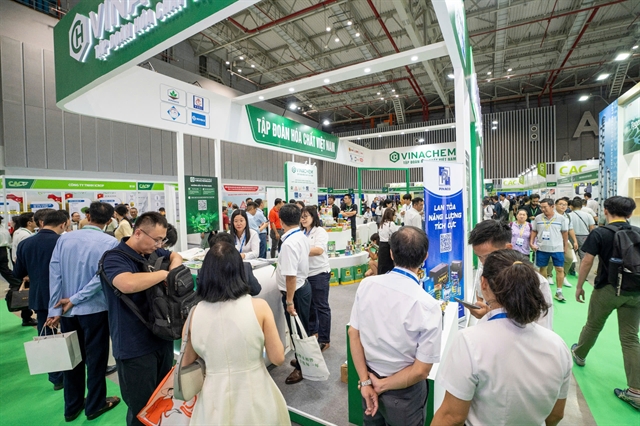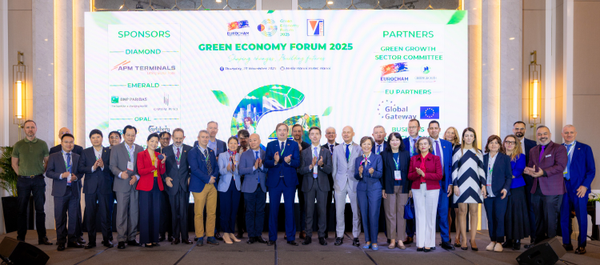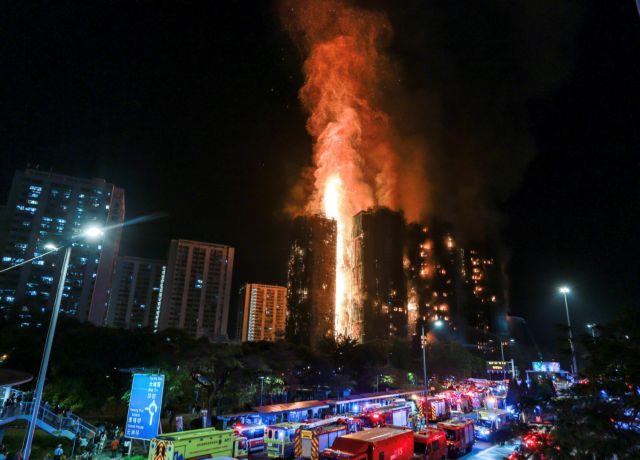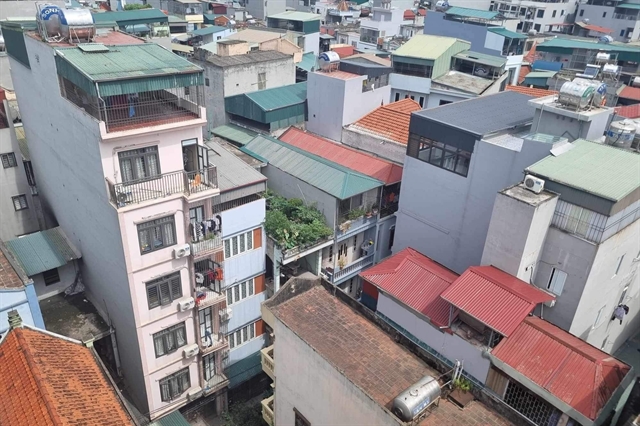 Business Beat
Business Beat
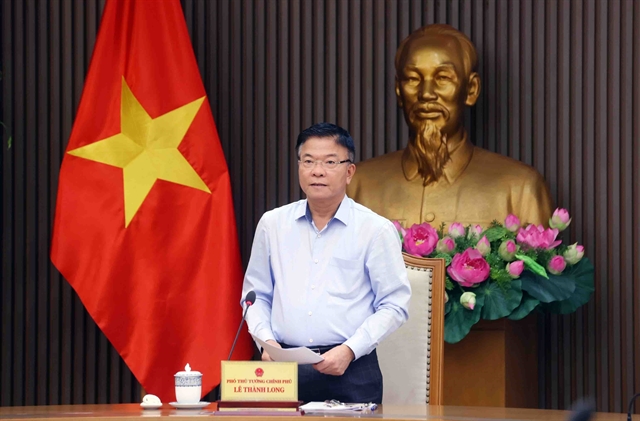
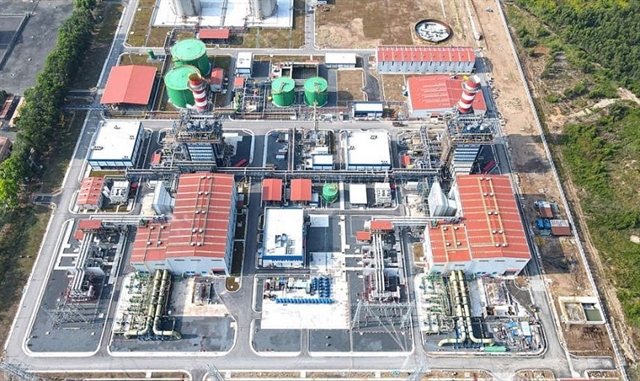
|
| The Nhơn Trạch 3 Power Plant. — Photo nangluongvietnam.vn |
HÀ NỘI — After many efforts to overcome numerous challenges, the first thermal power project using imported LNG, Nhơn Trạch 3&4, is finally expected to begin commercial operation in the fourth quarter of this year.
Most other LNG projects in the Power Plan VIII are still in the investment phase or looking for investors.
The goal of putting around 15 LNG power projects into operation before 2030 is proving to be quite difficult.
This was how Nguyễn Duy Giang, deputy general director of the Petrovietnam Power Corporation (PV Power), said about LNG power project investment at the recent 2025 Annual Oil and Energy Forum with the theme 'Energy Transition: Vision and Action'.
Addressing issues
Sharing the challenges of the Nhơn Trạch 3&4 project, Giang explained that the implementation of the Nhơn Trạch 3&4 LNG power project encountered many obstacles, but PV Power had received help from the Government, Prime Minister and various ministries to address these issues.
In addition, the project had been allowed by the Government to apply the principle of converting gas prices to electricity prices and was guaranteed a consumption of 65 per cent of the annual LNG electricity output for 10 years.
This has been a positive sign for other LNG projects, but in reality, many foreign investors still believe that such a 65 per cent electricity output guarantee is below the project's breakeven point.
They hoped that the guaranteed percentage would be raised to 80-90 per cent for 15-20 years, said Giang.
In addition, the implementation of LNG power projects also faces difficulties in clearing transmission line capacity under the Power Plan VIII.
Notably, Nhơn Trạch 3&4 is the first project to borrow foreign capital without government guarantees. This meant other LNG power projects would likely face difficulties, given that the government guarantee mechanism was no longer available, Giang said.
The reality is that the challenges in implementing LNG power projects are manifold.
Recently, despite five consortia being invited to bid for the Nghi Sơn LNG power project, none of them submitted any bid documents.
For PV Power, the reason was that the investment calculations, development strategy, and the 65 per cent electricity output guarantee were not attractive enough to investors, said Giang.
Meanwhile, T&T Group's decision not to submit a bid was mainly due to bidding terms, particularly the requirement to submit a bid guarantee of 1 per cent of the total investment, which amounted to US$22 million for the Nghi Sơn LNG power project.
Furthermore, even if an investor wins the bid, it can not immediately proceed with the project as they still have to negotiate contracts with Thanh Hóa Province and the Power Purchase Agreement (PPA) with EVN.
Assessing the difficulties in implementing LNG power projects, Dr. Nguyễn Quốc Thập, chairman of the Vietnam Petroleum Association (VPA), said that the primary issue was the slow growth of the LNG power consumption market compared to the target set in Power Plan VIII and the adjusted version.
Many investors are concerned that the high production costs of LNG electricity would make it difficult to sell electricity to the Vietnam Electricity (EVN).
This was a complex issue that Decree No 56/2025/NĐ-CP, dated March 3, this year, or Decree No 100/2025/NĐ-CP, dated May 8, this year, can not resolve, as they did not address the needs of investors and related companies.
Notably, there is still no standard PPA for LNG power projects, including both BOT and IPP projects, and the power grid planning is not synchronised with the source development planning.
Although the Electricity Law allowed private entities to participate in power grid development, current guiding decrees were still vague, Thập pointed out.
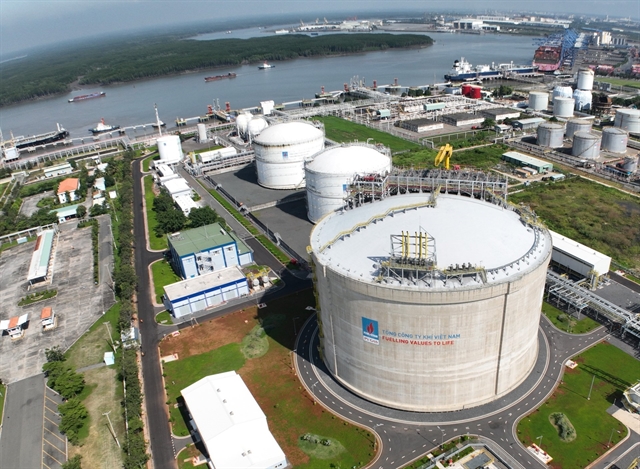
|
| The Thị Vải LNG Storage Facility at PV GAS Vũng Tàu plays a key role in storing and supplying LNG to gas consumers in the southeastern region. —Photo vietnamfinance.vn |
Industrial consumers
To address the challenges in LNG power projects, the VPA has proposed the development and enactment of a law on national energy, integrating the Electricity Law, Law on Minerals, and other related laws, as energy is a crucial part of national infrastructure and a foundation for developing all other economic sectors.
Additionally, the Government should synchronise the planning of LNG ports, LNG power plants, transmission systems and large industrial consumers to attract investment.
Investment procedures for BOT and IPP projects should be simplified, as current procedures prolong the investment process and put Vietnamese enterprises at a disadvantage.
A selection mechanism for large-scale, key LNG power projects should also be developed, and guarantees for certain special projects need to be considered.
The LNG power market is not aimed at general consumers but rather focuses on industrial users who want long-term commitments.
If future policies address this issue, it would resolve the concerns about guarantees, commitments for output consumption, and LNG supply contracts between power plants and LNG suppliers.
This would also relieve the Government from worrying about guarantees, and EVN would not have to worry about potential losses or responsibility for guarantees, emphasised the VPA Chairman.
Additionally, allowing qualified LNG power plant investors to independently invest in infrastructure to connect power plants with electricity buyers is also an important solution to resolve existing difficulties in LNG power project implementation, according to the chairman.
Proposing a new approach to developing energy transition projects, Nguyễn Đức Hiển, deputy head of Policy and Strategy Department under the Central Economic Commission, emphasised the need to focus on reforming the electricity market, electricity trading mechanisms, electricity prices and resolving pending issues from wholesale to retail.
In reality, no single policy could solve every problems, he said. Vulnerable groups needed their own specific support policies, while electricity prices must gradually approach market rates, said Hiển.
As one of the key energy transition pillars for Việt Nam from now until 2035, LNG power is an inevitable trend to replace high carbon-emitting power sources like coal and oil.
Therefore, to accelerate LNG power projects, ministries and agencies should also make appropriate adjustments when co-operating with foreign investors.
This is also the realisation of the principle of "harmonising benefits and sharing risks" highlighted by Prime Minister Phạm Minh Chính in matters related to economic cooperation and investment, said Giang. — VNS

